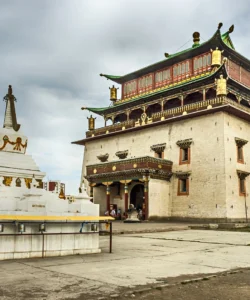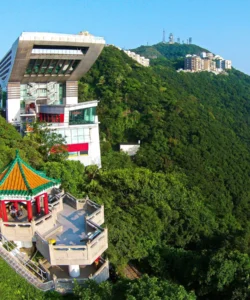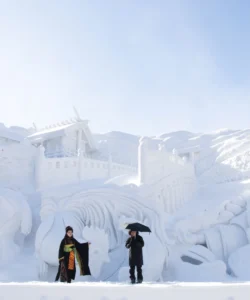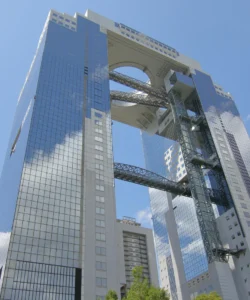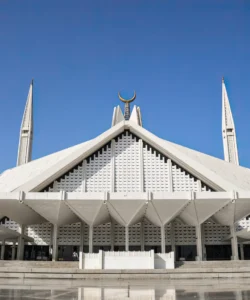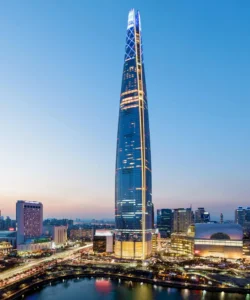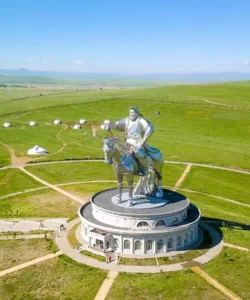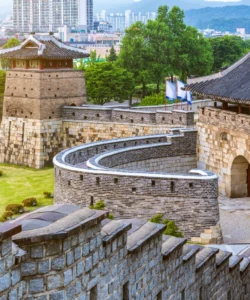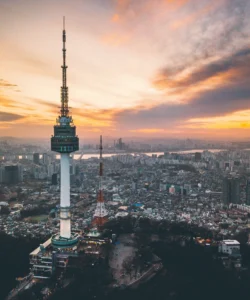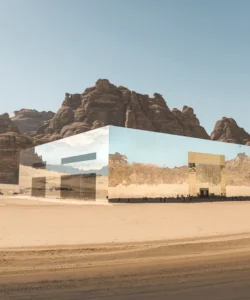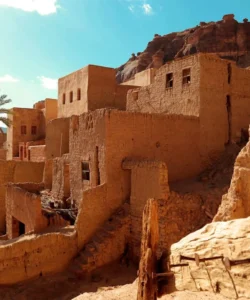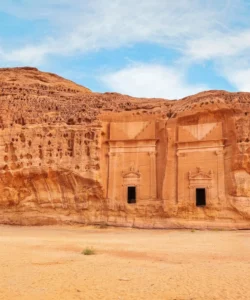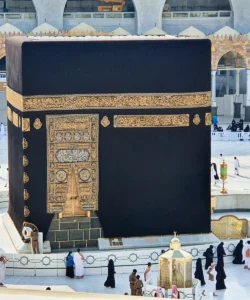Boudhanath (also spelled Boudha or Boudhanath Stupa) is a colossal and immensely sacred Buddhist stupa located in Kathmandu, Nepal. It is the largest spherical stupa in Nepal and one of the largest in the world, serving as the spiritual heart of Tibetan Buddhism outside of Tibet.
Name: Boudhanath Stupa (Nepali: बौद्धनाथ स्तूपा; also Khasti Chaitya or Khāsa Chaitya in Newari; Jarung Khashor or Lhundrup Tsek in Tibetan)
Address: Boudha, Kathmandu, Nepal. It is situated approximately 7-11 kilometers northeast of Central Kathmandu city center, in the Boudha neighborhood. Its massive size makes it easily noticeable, especially on approach to Tribhuvan International Airport.
How to Get There:
Boudhanath Stupa is a major landmark in Kathmandu and is very accessible:
- By Air: The closest airport is Tribhuvan International Airport (KTM) in Kathmandu. From the airport, it’s a short 15-minute taxi or ride-sharing (e.g., Pathao) trip to Boudhanath.
- By Taxi/Ride-Sharing: This is the easiest way to reach the stupa from anywhere in Kathmandu, including popular tourist areas like Thamel.
- By Local Bus: For budget travelers, local buses are available from Kathmandu’s main bus stations (e.g., Ratna Park Bus Station) directly to Boudha.
- By Foot: While technically walkable from central Kathmandu, it’s a long walk (around 1.5 – 2 hours) and generally not recommended due to traffic and heat.
- Entrance Fee: There is an entrance fee for foreign visitors.
- Dress Code: As a sacred site, modest dress is required (shoulders and knees covered). Footwear must be removed before entering the main stupa platform for circumambulation.
- Best Time to Visit: Early morning (before 9 AM) or late afternoon/evening (after 4 PM) are ideal. The atmosphere is particularly vibrant during these times with monks chanting, pilgrims circumambulating, and prayer wheels spinning. Sunset, as the stupa is illuminated, is also very magical.
Landscape and Architecture:
Boudhanath Stupa’s “architecture” is a grand and symbolic representation of Buddhist cosmology, seamlessly integrated with a bustling spiritual and commercial hub.
- Massive Spherical Dome: The central and most prominent feature is its gigantic, whitewashed hemispherical dome (anda), which forms the base of the stupa. It is one of the largest spherical stupas in the world, with a diameter of about 100 feet and rising to 36 meters (118 feet) in height. The dome represents the earth, or the womb of the universe.
- Mandala Design: The entire structure of Boudhanath Stupa is designed in the shape of a mandala, a sacred geometric pattern that symbolizes the universe, harmony, and the interconnectedness of all things in Buddhist cosmology. The stupa itself is a three-dimensional mandala.
- Harmika with All-Seeing Eyes: Above the dome sits a cubical structure called the harmika. Each of its four sides is painted with the iconic “all-seeing eyes of the Buddha” (representing wisdom and compassion) gazing in the four cardinal directions. Between the eyes, where a nose would be, is a curly symbol that represents the Nepali character for the number 1, symbolizing unity and the one way to enlightenment. A “third eye” often represents spiritual insight.
- Thirteen Tiers (Trayodashabhuvana): Above the harmika, a golden spire rises in thirteen concentric tiers or steps. These represent the thirteen stages of spiritual realization or enlightenment that sentient beings must pass through to achieve Buddhahood in Vajrayana Buddhism.
- Gilded Umbrella and Finial: The very pinnacle is topped with a gilded umbrella and a finial, symbolizing spiritual sovereignty and the jewel of Nirvana.
- Prayer Wheels and Flags: Encircling the base of the stupa are 147 large prayer wheels, inscribed with the sacred Buddhist mantra “Om Mani Padme Hum.” Colorful prayer flags (lungta) stretch from the top of the spire down to the base, fluttering in the wind and believed to carry prayers and blessings to the heavens.
- Three Terraced Plinths: The massive dome rests on three large, terraced platforms (or vedikas) that decrease in size, forming the base. These platforms symbolize the earth and provide a wide walkway for circumambulation.
- Surrounding Monasteries (Gompas): The stupa is surrounded by a vibrant community of over 50 Tibetan Buddhist monasteries (gompas), shops selling religious artifacts, guesthouses, and restaurants, creating a bustling spiritual and commercial hub. Many of these monasteries were established after the influx of Tibetan refugees in 1959.
- Symbolism of Five Elements: The stupa’s architecture is often seen to embody the five basic elements: the square base is Earth, the dome is Water, the conical spire is Fire, the lotus parasol and crescent moon at the top are Air, and the overall structure is Space.
What Makes It Famous:
- Largest Spherical Stupa in Nepal and One of the Largest in the World: Its sheer size and impressive spherical dome make it a monumental landmark.
- UNESCO World Heritage Site: Designated in 1979, Boudhanath is recognized for its immense spiritual, cultural, and historical significance, preserving Nepal’s Buddhist heritage.
- Epicenter of Tibetan Buddhism Outside Tibet: After the 1959 Tibetan uprising, thousands of Tibetan refugees settled around Boudhanath, transforming it into the most important center for Tibetan Buddhism and culture outside of Tibet.
- All-Seeing Buddha Eyes: The iconic painted eyes on the stupa are instantly recognizable globally and symbolize Buddha’s wisdom and compassion.
- Living, Active Pilgrimage Site: It is a vibrant hub of continuous worship, meditation, and circumambulation (kora) by thousands of devotees (Tibetan, Nepali, and international Buddhists) daily, creating an incredibly immersive spiritual atmosphere.
- Relics of Kassapa Buddha: It is believed to enshrine the sacred relics of Kassapa Buddha, an ancient Buddha who preceded Gautama Buddha, adding to its profound sacredness.
- Resilience After 2015 Earthquake: The stupa was severely damaged in the 2015 Nepal earthquake but was meticulously and successfully reconstructed, largely through private donations and volunteer efforts, making it a symbol of hope and renewal.
- Legends and History: Its origins are rooted in various legends, including the popular tale of a humble widow, Jyajima, and her four sons who worked tirelessly to build it. It also sits on an ancient trade route between Nepal and Tibet.
Differences from Some Other Wonders:
- Largest Spherical Stupa: While Swayambhunath also has the “all-seeing eyes” and is a significant stupa in Kathmandu, Boudhanath is distinctly known as the largest spherical stupa in Nepal and one of the largest globally. Its immense, wide dome is a defining physical characteristic.
- Epicenter of Tibetan Buddhism: Unlike Swayambhunath, which is revered by both Buddhists (Newar, Tibetan) and Hindus (with active syncretic worship), Boudhanath is specifically the uncontested heart and epicenter of Tibetan Buddhism in Nepal, a direct result of the large Tibetan refugee community settled around it. This gives it a distinctly Tibetan cultural flavor.
- Lack of Hindu Syncretism (in the same visible way): While religious harmony exists in Kathmandu, Boudhanath’s visible religious expression is overwhelmingly Buddhist, particularly Tibetan Buddhist, without the explicit blending of Hindu shrines and deities within the main stupa platform found at Swayambhunath.
- Ground-Level Platform: Unlike Swayambhunath, which is perched atop a hill and accessed by numerous steps, Boudhanath is built on a large, multi-tiered base platform at ground level, allowing for broad circumambulation.
- Focus on Mandala Layout: While many Buddhist stupas are symbolic, Boudhanath’s entire structure is famously and explicitly a three-dimensional mandala, where every element corresponds to a specific aspect of Buddhist cosmology and the path to enlightenment.
- Commercial and Spiritual Hub: The surrounding ring of monasteries, shops selling Tibetan artifacts, and restaurants create a bustling commercial and spiritual hub directly around the stupa, offering a different integrated experience than a more isolated monument.
- No Monkeys as Primary Draw: While occasional monkeys might be around, they are not a central, defining, or “sacred resident” feature as they are at Swayambhunath (“Monkey Temple”).
Boudhanath Photos:
































